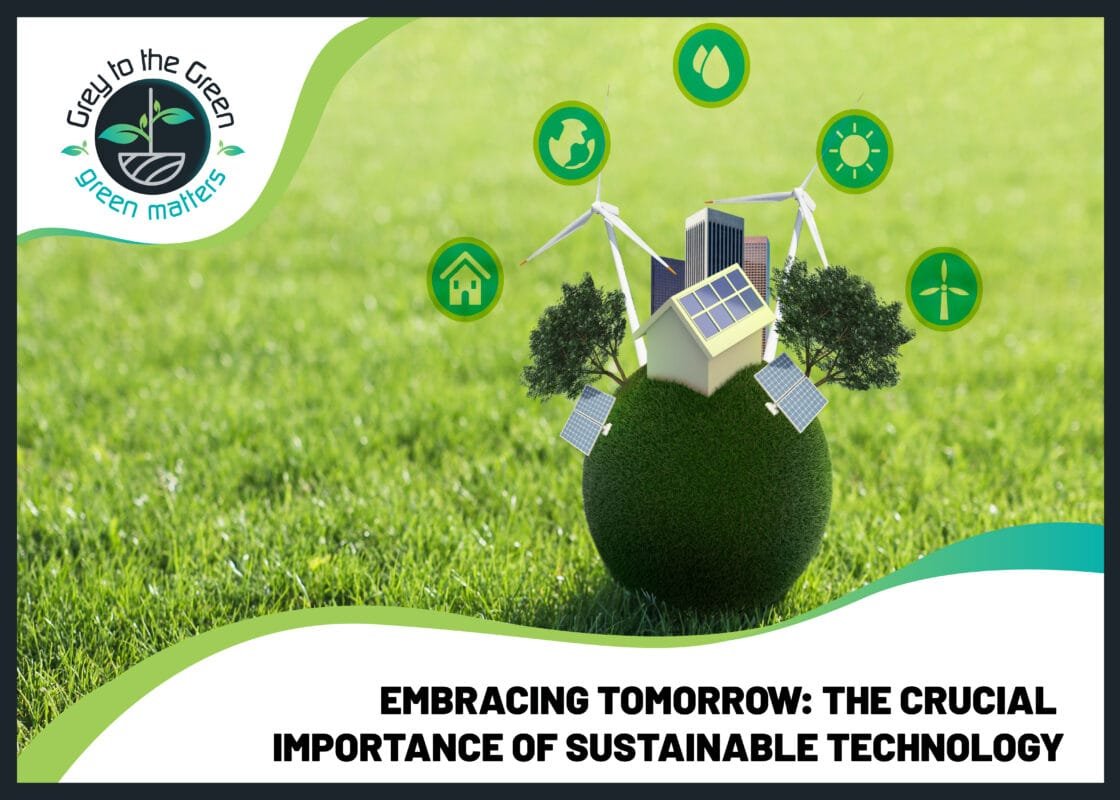In today’s world, environmental awareness is paramount as it serves as the foundation for effective conservation efforts. It instills an understanding of our planet’s fragility and the consequences of human actions. By raising awareness, individuals, communities, and nations are more likely to take proactive steps towards conservation. Environmental awareness fosters a sense of responsibility, encouraging sustainable practices, and advocating for policies that protect our ecosystems. It is the catalyst for collective action, driving initiatives that aim to preserve biodiversity, combat climate change, and ensure a harmonious coexistence between humans and the environment.
Let’s take a look at:
The recent flooding catastrophe in Libya- Researchers from World Weather Attribution, an international research collaboration specializing in the study of climate change’s effects, have determined that global warming significantly increased the likelihood of the storm responsible for triggering one of Libya’s most devastating floods. According to their findings, the influence of global warming made such an event up to 50 times more probable.
The furious floods and landslides in Himachal Pradesh – A multitude of factors, as outlined by experts, including environmentalists and professionals from non-governmental organizations, contribute to this complex issue. This extensive list encompasses climate change, unregulated construction, hydropower initiatives, deforestation, and the encroachment of flood plains. The catastrophe in Himachal is predominantly a consequence of human intervention rather than natural forces.
The continuous Wildfires of Greece – The majority of these fires were initiated by human actions, whether due to criminal negligence or deliberate intent. In some areas, fires simultaneously erupted at multiple locations in close proximity, indicating the potential involvement of arsonists aiming to propagate the fires as well as natural causes. Additionally, Greece has experienced a series of devastating fires this summer, which the government attributes to the effects of climate change. Furthermore, intense winds worsened the wildfires in Greece, resulting in the ignition of more than 50 new blazes during hot and dry weather conditions.
Devastation by the Earthquake in Morocco – The earthquake was a consequence of a geological phenomenon known as an “Oblique reverse fault.” This phenomenon takes place when tectonic plates collide, leading to the thickening of the Earth’s crust. The pressure along these fault lines can trigger earthquakes as rocks suddenly move to relieve the built-up stress, a defining characteristic of seismic faults.
Eco-disasters, like floods and wildfires, often result from a combination of natural factors and human activities. Adopting sustainable living practices, such as reducing carbon emissions, responsible land use, and protecting natural ecosystems, can help mitigate these disasters and build a more resilient environment for future generations.
The Role of Education
Environmental education plays a pivotal role in nurturing awareness and responsibility toward our environment. Equipping individuals with knowledge about ecosystems, conservation, and sustainable practices, empowers them to make informed choices. This, in turn, drives responsible actions, promotes eco-friendly behaviors, and fosters a collective commitment to preserving our planet for a sustainable future.
The concept of nature-based learning and its positive effects on environmental consciousness.

- Nature-based learning immerses individuals in outdoor environments, fostering a deep connection with nature.
- It encourages hands-on exploration, leading to a better understanding of ecological systems.
- Exposure to natural settings cultivates empathy for the environment and a desire to protect it.
- Nature-based education emphasizes sustainability, teaching responsible stewardship of natural resources.
- Engaging with the outdoors helps individuals recognize the interdependence of all living organisms, reinforcing the importance of biodiversity conservation.
- Practical activities like gardening and wildlife observation instill a sense of responsibility for the environment.
- Nature-based learning equips learners with the skills to address real-world environmental challenges and make informed decisions for a greener future.
Conservation Initiatives
Several successful environmental conservation projects have demonstrated the remarkable impact of dedicated efforts in preserving natural ecosystems. The Great Barrier Reef Marine Park Authority’s initiatives have played a pivotal role in safeguarding the world’s largest coral reef system. In Costa Rica, the creation of protected areas like Corcovado National Park has conserved vast rainforests and diverse wildlife. The African Parks Network has effectively managed numerous wildlife reserves, curbing poaching and restoring populations. These projects serve as beacons of hope, showcasing that collaborative conservation actions can counter environmental threats and secure a sustainable future for our planet.
Individual Action
Embarking on a journey towards environmental conservation doesn’t always require grand gestures. Small, everyday actions can collectively make a substantial impact. Start by reducing waste and recycling diligently. Consider eco-friendly products like Grey to the Green’s “Jadu Ki Potli” and “Mystic Sugandha,” which align with sustainable living practices. Plant a tree, participate in local clean-up drives, or support organizations dedicated to conservation. By choosing conscious products and adopting eco-friendly habits, you become a part of the solution. Together, we can protect our planet and ensure a green, thriving future for generations to come. Explore these eco-friendly offerings at Grey to the Green’s website: https://greytothegreen.com/.
Corporate Responsibility
Businesses and industries wield significant influence in environmental stewardship. They can adopt sustainable practices, reduce emissions, and minimize resource consumption. Embracing eco-friendly technologies, promoting responsible sourcing, and investing in renewable energy are steps towards sustainability. By setting green standards, these entities inspire positive change, not only in their operations but also among consumers and competitors. Ultimately, the corporate world’s commitment to environmental responsibility can contribute significantly to a more sustainable and ecologically balanced future.
Government Policies
Government policies and regulations are pivotal in environmental protection. They establish standards for emissions, pollution control, and resource management. By enforcing these regulations, governments mitigate environmental harm, conserve natural resources, and promote sustainable practices. Additionally, they can incentivize green technologies and penalize polluters, fostering a cleaner and more eco-conscious society. The right policies encourage businesses and individuals alike to prioritize environmental responsibility, aligning economic progress with ecological preservation.
How Technology and Innovation can aid in environmental monitoring and conservation efforts

| TECHNOLOGY/INNOVATION | CONTRIBUTION TO CONSERVATION |
| Remote Sensing | Enables monitoring of deforestation, land use changes, and wildlife habitats from afar through satellite imagery. |
| IoT Sensors | Collect data on air and water quality, temperature, and biodiversity, aiding in real-time environmental monitoring. |
| Artificial Intelligence | Analyzes vast datasets to identify patterns, detect illegal activities like poaching, and optimize resource management. |
| Drones | Used for aerial surveys, wildlife tracking, and monitoring hard-to-reach areas, reducing human interference in sensitive ecosystems. |
| Blockchain Technology | Provides transparency and traceability in supply chains, ensuring sustainable sourcing of products like timber and seafood. |
| 3D Printing | Allows the creation of custom equipment for conservation, such as prosthetics for injured animals or habitat restoration structures. |
| Renewable Energy Tech | Reduces reliance on fossil fuels, mitigating greenhouse gas emissions and supporting cleaner, sustainable energy sources. |
These technologies and innovations empower environmentalists and conservationists to make data-driven decisions and take proactive measures to protect our planet.
Global Perspective
International efforts and agreements play a pivotal role in addressing global environmental challenges. Treaties like the Paris Agreement and the Convention on Biological Diversity bring nations together to combat climate change and protect biodiversity. Organizations such as the United Nations Environment Programme (UNEP) coordinate efforts and provide a platform for collaboration. These initiatives promote the exchange of knowledge, resources, and best practices on a global scale. Additionally, they emphasize the importance of collective responsibility in safeguarding our planet for future generations. By working together across borders, countries can amplify their impact and tackle environmental issues on a truly global scale.
Conclusion
Environmental awareness and conservation are vital for our planet’s well-being. By understanding the impacts of our actions and embracing sustainable practices, we can safeguard the environment for future generations. Visit https://greytothegreen.com/ to explore eco-friendly products that support these efforts, like the “Jadu Ki Potli” and “Mystic Sugandha.” Together, through conscious choices and responsible actions, we can make a positive difference in preserving our precious Earth. Join us in this journey towards a greener, more sustainable future.















